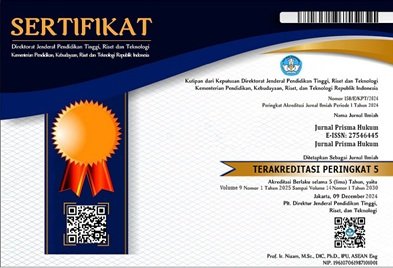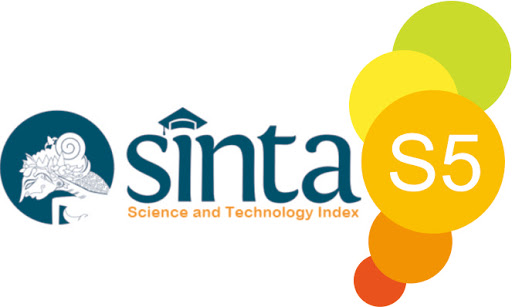PERLINDUNGAN HUKUM BAGI PEMENANG LELANG KAITANNYA DENGAN ADANYA CESSIE TERHADAP GUGATAN PEMILIK JAMINAN DALAM LELANG EKSEKUSI HAK TANGGUNGAN
Kata Kunci:
Cessie, Hak Tanggungan, LelangAbstrak
Seseorang tidak lepas dari kebutuhan keuangan, metode dalam mendapatkan tambahan keuangan melalui perjanjian kredit (perjanjian pokok) yang dibebani hak tanggungan (perjanjian accesoir). Hak tanggungan merupakan jaminan kebendaan yang memberikan kedudukan istimewa kepada kreditor untuk memperoleh pelunasan piutang dari hasil penjualan objek jaminan, dalam praktiknya, piutang kreditor ini dapat dialihkan kepada pihak ketiga melalui mekanisme cessie sebagaimana diatur dalam Pasal 613 Kitab Undang-Undang Hukum Perdata. Setelah dilakukan cessie, sering kali muncul persoalan hukum saat kreditor baru (cessionaris) melakukan eksekusi atas objek jaminan. Sengketa yang timbul karena debitor atau pihak ketiga merasa tidak mendapat pemberitahuan, atau mempertanyakan keabsahan cessie. Adapun objek jaminan tetap dilelang dan dimenangkan oleh pihak ketiga sebagai pemenang lelang yang beritikad baik. Pasca lelang, kepemilikan pemenang lelang sering digugat oleh pemilik jaminan. Rumusan masalah penelitian ini yaitu Bagaimana Prosedur Pelaksanaan Lelang Eksekusi Hak Tanggungan kaitannya dengan adanya Cessie yang dilakukan sebelum pelaksanaan lelang dan Bagaimana Perlindungan Hukum bagi Pemenang Lelang kaitannya dengan adanya Cessie terhadap gugatan pemilik Jaminan dalam Lelang Eksekusi Hak Tanggungan. Dalam penelitian ini, peneliti menggunakan Teori Lelang menurut Yahya Harahap dan Teori Perlindungan Hukum menurut Satjipto Rahardjo. Metode penelitian yang digunakan dalam penelitian ini adalah jenis penelitian yuridis normatif, yaitu penelitian hukum dengan studi kepustakaan berdasarkan sumber bahan hukum primer, sekunder dan tersier dan didukung dengan wawancara. Adapun pendekatan penelitian yang diguunakan adalah Pendekatan Perundang-undangan, Pendekatan Konseptual, Pendekatan Analitis serta Pendekatan Kasus. Teknik pengumpulan bahan hukum dilakukan dengan cara mengidentifikasi dan menginventarisasi aturan hukum positif, literatur buku, jurnal dan sumber bahan hukum lainnya. Untuk teknik analisa bahan hukum dilakukan dengan penafsiran gramatikal, penafsiran Sistematis, Kontruksi Analogi dan konstruksi penghalusan hukum. Hasil penelitian menyimpulkan, bahwa cessie yang dilakukan sebelum pelaksanaan lelang tidak menghalangi proses pelaksanaan lelang eksekusi, sepanjang telah memenuhi syarat formil (akta cessie, pemberitahuan kepada debitor, dan pencatatan di kantor pertanahan) serta syarat materil (adanya piutang yang sah dan masih dapat ditagih. Bahwa perlindungan hukum bagi pemenang lelang dalam lelang eksekusi hak tanggungan kaitannya dengan adanya cessie bertumpu pada tiga pilar utama yaitu keabsahan proses lelang sesuai ketentuan hukum yang berlaku, keabsahan cessie berdasarkan hukum yang berlaku, serta itikad baik pemenang lelang sebagai pembeli yang sah, karena pemenang lelang berhak menikmati hak yang diberikan oleh hukum termasuk perlindungan hukum merupakan hak bagi pemenang lelang.
A person cannot escape financial needs, a method of obtaining additional finances through a credit agreement (principal agreement) burdened with a mortgage (accessory agreement). A mortgage is a material guarantee that gives a creditor a special position to obtain repayment of receivables from the sale of the collateral object. In practice, this creditor's receivables can be transferred to a third party through a cession mechanism as regulated in Article 613 of the Civil Code. After a cession is carried out, legal issues often arise when the new creditor (cessionary) executes the collateral object. Disputes arise because the debtor or third party feels they have not received notification, or questions the validity of the cession. The collateral object is still auctioned and won by a third party as the auction winner in good faith. After the auction, the ownership of the auction winner is often contested by the collateral owner. The formulation of the research problem is How is the Procedure for Implementing the Auction of Mortgage Rights Execution related to the existence of a Cessie carried out before the auction and How is the Legal Protection for the Auction Winner related to the existence of a Cessie against the lawsuit of the Collateral owner in the Auction of Mortgage Rights Execution. In this study, the researcher uses the Auction Theory according to Yahya Harahap and the Legal Protection Theory according to Satjipto Rahardjo. The research method used in this study is a normative juridical research type, namely legal research with a literature study based on primary, secondary, and tertiary legal sources and supported by interviews. The research approaches used are the Legislative Approach, the Conceptual Approach, the Analytical Approach, and the Case Approach. The legal material collection technique is carried out by identifying and inventorying positive legal regulations, literature books, journals, and other legal material sources. The legal material analysis technique is carried out using grammatical interpretation, systematic interpretation, analogical construction, and legal refinement construction. The research results concluded that a cession made before the auction does not hinder the execution auction process, as long as it meets the formal requirements (cession deed, notification to the debtor, and recording at the land office) and material requirements (the existence of valid and collectible receivables). That legal protection for auction winners in mortgage execution auctions in relation to the existence of a cession rests on three main pillars, namely the validity of the auction process according to applicable legal provisions, the validity of the cession based on applicable law, and the good faith of the auction winner as a legitimate buyer, because the auction winner has the right to enjoy the rights granted by law, including legal protection which is a right for the auction winner.





